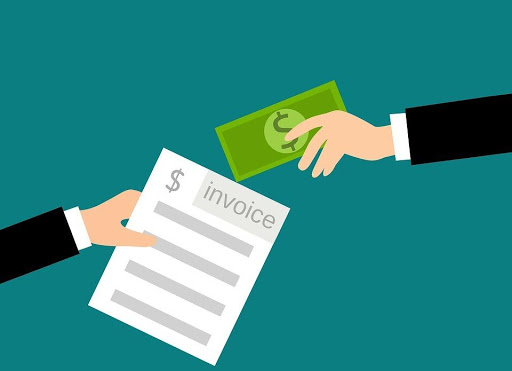Demands for the food & beverage industry in the U.S. has never been higher; nor has the demand for commercial financing opportunities. Is asset based lending right for your business?

U.S. statistics for the food & beverage industry in 2018 so far have shown a sharp increase of $2.7 billion up from $13.5 billion in 2017; and those numbers are only expected to increase significantly, with analysts predicting total sales in in 2021 to be an estimated $23.9 billion.
It’s clear from these numbers that there has never been a more lucrative time to explore the food & beverage industry. But whether you’re a small mom & pop restaurant or a midscale chain of independent convenience stores, you need to keep the competition in mind.
The box enterprise competition doesn’t just have marketing on their side. They’re backed by facilities. They’re backed by production. They’re backed by customers. They’re backed by marketing. And financing.
Lots of financing.
In an increased era of competition and change, not everyone is equipped to go up against large scale enterprises; and that’s only to be expected. Especially in the food and beverage industry where tastes change in the blink of an eye. But customers demand relevancy. They demand companies keep up the pace with the times. And you had better be equipped to meet the demands and pressures of your customer base.
What Is Working Capital?

Working capital is the line of capital you reserve for your daily operations. This can include (but may not be limited to):
- Wages
- Bills
- Facility costs
- Vendor costs
- Inventory costs
- Equipment costs
- Repair costs
- Marketing costs
- License and insurance renewal fees
- Business license and renewal fees
And while these sort of overhead costs are general to all businesses, when it comes to food & beverage companies, there’s a few things you’ll need to take into consideration.
How To Manage Working Capital
Some small businesses don’t have any sort of need for detailed overhead management. A software startup, for example, is typically going to rely less on facility management costs than a pharmaceutical start up; and a small accounting firm relies more on their skills than vendor fees.
With the food & beverage industry, the opposite is true. The only thing you can expect is the unexpected.
You can never know when equipment will break down. Or you’ll be short of staff. Or any number of daily emergencies that you may have never thought of.
Also keep in mind that the overhead costs of maintenance and bills are significantly higher in the food & beverage segment than other service sectors; and that’s as true for production as it is retail and sales. Ideally, you’ll prepare a thorough checklist ahead of time to allocate for daily operations and bills. This is especially true if you’re just starting out. This is the yardstick from which you can successfully gauge your break even point of profitability—and ultimately, success.
But you’ll also need to think of a contingency budget to help plan for any unexpected liabilities. You’ll need resources which can guide you. And a comprehensive plan to place into action. And for that, you’ll eventually need some form of additional financial resources in order to help plan for worst case scenarios.
Cash flow problems may be a concern for any small business—but they’re aggravated even more by some of the daily pressures working in the service industry.
If you’re considering commercial financing options, there’s multiple avenues available to choose from. Some are risky. Some are patently secure. But deciding on the right option for you isn’t a question of indecision. It’s a question of knowing the right resources.
What Is Asset Based Lending?

Asset based lending is exactly what it sounds like—any form of a loan that has been secured by an asset. Most commonly, this takes the form of real estate and commercial property; although in the case of large manufacturing firms, equipment and machinery will often be held as physical collateral.
However, in the food and beverage industry it can work a little differently. While there’s no doubt that commercial property will frequently be a realistic solution (especially given the unpredictability of food & beverage sales,) there’s numerous variable factors—such as inventory, accounts receivable and equipment—which can allow for the actual amount of your available loan to be based based on the total value of your combined assets; not your balance sheet. This can make revolving asset based lending a more attractive option for businesses in food & beverage, whether they’re looking for an alternative form of commercial financing or simply as an additional resource.
How Can Asset Based Lending Help My Business?
Unlike conventional lines of credit and term loans, asset based lending converts your available operating costs into collateral. Since your funding is calculated by combined operating assets, regulations and obligations are considerably less restrictive than traditional short and long term loans. This also allows for a more consistent level of funding better equipped to secure operations during any seasonal ebbs and spikes you may experience.
Another advantage of asset based lending for companies specifically in the food & beverage industry is its inherent flexibility. Many commercial financing providers are aware of the variable factors you might face as a smaller business owner; which makes asset based lending particularly well suited for business owners who are first venturing into the industry as well as owners looking to expand. Because inventory demands can both result in a surplus and deficit according to any number of factors (seasonal increase, popularity, competitive sales, daily wear and maintenance costs) you need a funding source which is going to be fluid and adaptive to any circumstance. With asset based lending, your funding is contingent on your business volume; not your balance.
What Areas Of My Business Can Asset Based Lending Affect?
The current retail landscape has grown increasingly driven by technology; and the food & beverage industry is no exception. By using asset based lending as a key funding source for inventory and equipment, your available operating budget can be better utilized for key areas such as:
- Digital marketing
- Strategic planning
- Product offering evaluations
- Vendor management
- Packaging and labeling
- Business expansion
As we’ve emphasized previously, the amount of funding obtained through asset based management is contingent on your total combined asset level. As your business grows, so does your borrowing capacity. In this regard, asset based lending can be seen as a key performance driver which can help your business succeed and penetrate new markets, new demographics and new opportunities. And as food & beverage companies continue to explore options of mergers & acquisitions, asset based lending becomes allows for a much more robust line of capital to draw from.
What Is Accounts Receivable Factoring?

Also referred to as invoice factoring, accounts receivable factoring is a specific facet of asset based lending where accounts receivable invoices are pledged to a lender for a sum advance on their value—typically anywhere from 80 – 90% of their combined value. It’s certainly not a form of insurance; but if you find yourself using particular lines of vendor offerings regularly, this may be well suited for your business.
There’s certain benefits to this kind of asset based loan, including:
- Instant cash within days of generating invoices
- Creating a seamless flow between collections and invoices
- Maintaining equity while still obtaining capital
- Increased availability of capital as a result of sales volume
One of the greatest advantages to accounts receivable factoring however, is the fact that invoice factoring companies will be obtaining their collections from your vendors—not you. You’re not defaulting on your credit if a vendor is late; giving you the added bonus of security.
What About Conventional Lending Options?
It may very well be that asset based lending is a not realistic alternative to traditional commercial financing, such as term loans or lines of credit, for your business at this stage. It may be a lending source that you’re considering as a supplementary option or simply find to be outside your scope. Let’s look at some of the more standard financing options for small businesses:
Traditional Term Loans
For the average small business owner, a conventional short or long term loan looks like an attractive enough option. Many banks currently offer highly competitive interest rates, and are insured for a much higher amount of capital to borrow from.
However, there’s still a need for collateral. And if your business doesn’t currently have it, you’ll still have to provide some physically tangible form. Your home. Your vehicles. Financial accounts. All of which can be seized without warning, leaving you in debt and facing stringent legal ramifications.
But simply having physical collateral isn’t enough. You’ll have to endure credit reviews and an approval period which can last in excess of six months. Neither of which are necessarily going to be a strong guarantee.
Larger banks invariably have inflexible rules regarding payment options and allocations. Smaller commercial lenders, however, are more apt to work with and accommodate small businesses because they understand each local market has specific needs, specific quirks and specific fluctuations in volume which are entirely unique to that given market. Which can make the sort of personalized service from smaller business lenders worth a lot more than a lower interest rate.
Business Lines Of Credit
Frequently referred to as a revolving line of credit, a business line of credit seems like an ideal solution for small businesses. And they frequently are. Since they provide a set financing line which can be drawn from regularly, it’s perfect for businesses who find their monthly operating expenses to be relatively consistent.
But anyone who’s worked in the food & beverage industry knows monthly costs simply aren’t going to be consistent. For somewhat established companies, there is a general predictability of business volume that comes through trial and error. But what about unforeseen circumstances? Equipment and inventory maintenance? Competition? Expansion?
Unfortunately, lines of credit also have specific limits applied to regular amounts borrowed. While some providers do offer flexible options, they’re typically at higher interest rates—and for a small business looking to gain a foothold, that may not be the most perfect option.
Keep in mind that with business lines of credit, you’re still subject to many of the same constraints of time and approval as with long and short term commercial loans. Just with a more limited amount of capital to draw from.
SBA Loans
The Small Business Administration (SBA) is a federal agency designed to assist small businesses to take advantage of available opportunities by accessing affordable funding. This is one area of funding which has gained in traffic in recent years; particularly with businesses who are looking at Designated Opportunity Zones (DOZs) as a retail location.
But the SBA is not a lending agency,. Instead, they incentivize lenders to approve small businesses by guaranteeing the majority of their capital. Which not only means a lengthier approval time than commercial banks, but also means a somewhat more limited chance if your business is in any form of food & beverage retail. This results in many small startup businesses being entirely unaware of SBA resources.
Conclusion

Franchises. Independent cafes. Specialty distributors. Wholesale marketing. Everywhere you look, the opportunities businesses and entrepreneurs in the food & beverage industry are waiting to be discovered. In cities. In suburbs. On farms.
Can it be a risky gamble? Certainly. But anyone going into any line of business, no matter how niche, knows that starting your own company is going to be a gamble.
Perhaps your vision is worth it. But vision without resources is nothing more than a pipe dream.
Just like the food & beverage industry has changed drastically over the past twenty five years, so has commercial financing options. It’s important to consider all resources and not simply rely on the same commercial bank leaders the big box retailers do. Your needs are different.
And so are the resources available to you.
